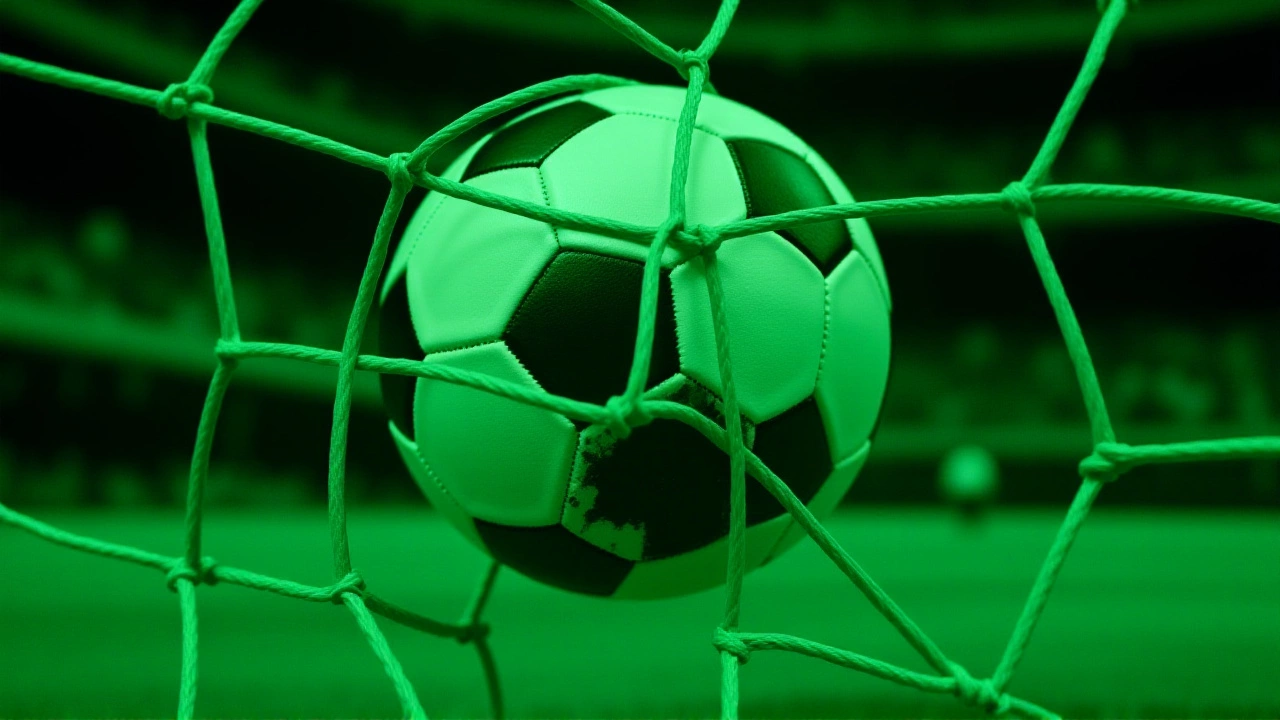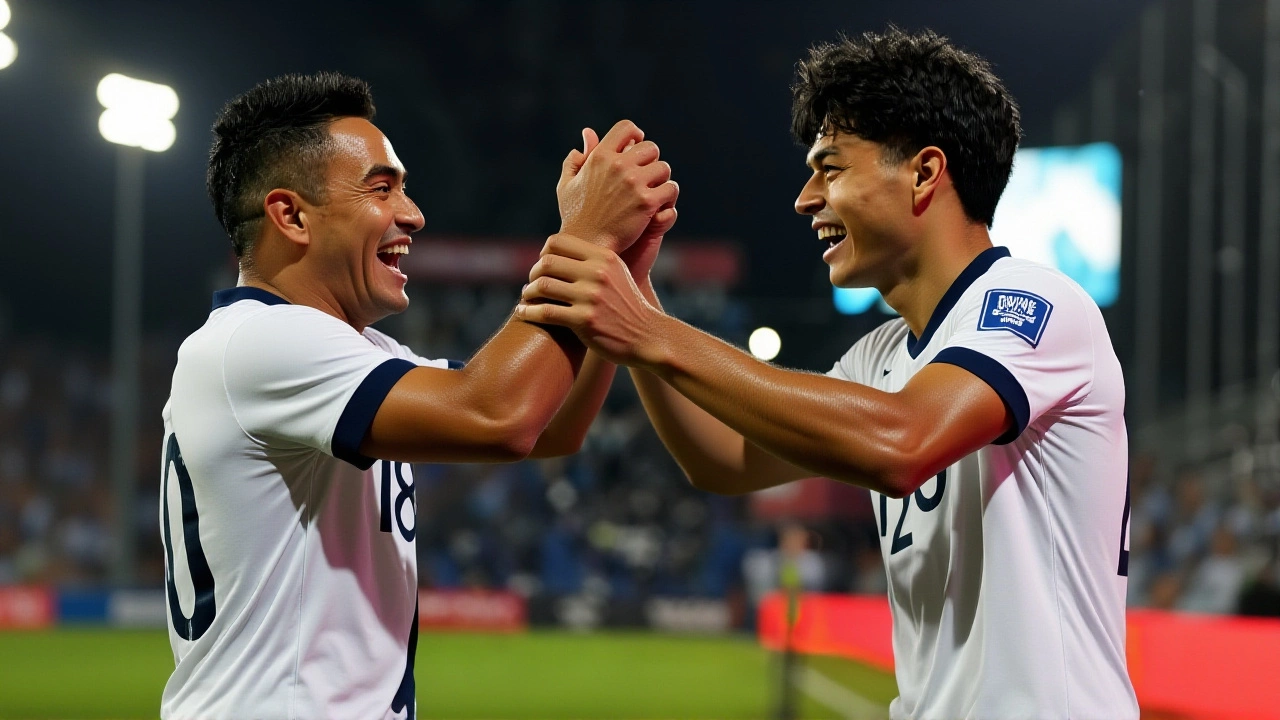Guatemala capped off its 2026 FIFA World Cup qualifying campaign with a 3-1 victory over Suriname on Tuesday, November 18, 2025, at Estadio Manuel Felipe Carrera in Guatemala City — but the real drama unfolded not on the scoreboard, but in the standings. A late own goal by Guatemala’s Nicolás Samayoa in the 90'+3 minute handed Suriname the crucial goal difference needed to leapfrog Panama and secure a spot in the FIFA Play-Off Tournament. It was a bittersweet end: Guatemala won the match, but Suriname won the tournament’s second-tier prize.
Guatemala’s late surge seals emotional finale
For 48 minutes, the match was a tense, goalless stalemate. Then, in the 49th minute, Darwin Lom rose above the defense to head home a cross from Óscar Santis, breaking the deadlock. The home crowd, still buzzing from a 3-2 loss to Panama just days earlier, erupted. Coach Luis Fernando Tenna had made four changes to the lineup — and they paid off.
By the 57th minute, Olger Escobar doubled the lead with a thunderous left-footed strike from the edge of the box. The ball didn’t just hit the net — it screamed into it. Then, in the 65th minute, Santis — who had been the architect of the attack — finished off a lightning-fast counterattack with another left-footed blast. The scoreline read 3-0. Guatemala had found its rhythm. For a moment, it felt like a fairytale ending.
Suriname’s miracle: an own goal that changed everything
But football, as always, has a sense of irony. With the match winding down, Suriname’s Sheraldo Becker whipped in a low cross from the right flank. The ball bounced off a defender, then off the outstretched leg of Nicolás Samayoa — and into his own net. The 90'+3 minute goal wasn’t just a consolation; it was a lifeline. It gave Suriname a 3-1 final score, but more importantly, it preserved their goal difference.
Here’s the twist: Suriname and Panama both finished with 7 points (2 wins, 3 losses, 1 draw). But Panama had a +2 goal difference. Suriname had +5. That’s right — +5. The own goal, while painful for Guatemala, didn’t hurt Suriname’s goal difference because it was a goal conceded, not scored. Suriname’s goal tally remained at 10, their goals against at 5. Panama’s was 9 against 7. The math didn’t lie: Suriname was the best second-place team in the group stage.
Group A chaos: points don’t tell the whole story
The final Group A standings were a mess of contradictions:
- Panama: 6 games, 2 wins, 3 losses, 1 draw, +2 GD, 7 points
- Suriname: 6 games, 2 wins, 3 losses, 1 draw, +5 GD, 7 points
- Guatemala: 6 games, 2 wins, 2 draws, 2 losses, -1 GD, 8 points
- El Salvador: 6 games, 1 win, 5 losses, 0 draws, -6 GD, 3 points
Guatemala had more points than both Panama and Suriname — but didn’t qualify. Why? Because Concacaf’s 2026 qualifying rules didn’t rank teams by total points in the final round. They ranked by goal difference among second-place finishers. Guatemala finished third. Their eight points meant nothing. It was a cruel twist: win your last match, and still be left out.

What this means for Suriname and Guatemala
Suriname, a nation of fewer than 600,000 people, will now travel to the FIFA Play-Off Tournament — likely in March 2026 — to face teams from Asia, Africa, or South America. Their journey, once written off, is alive. Players like Becker, D. Jubitana, and J. Grot, who were rated among the match’s top performers, will get a second shot at World Cup glory. For a Caribbean nation that hasn’t qualified since 1990, this is historic.
Guatemala, meanwhile, ends its campaign with pride — but also frustration. Their 2-2-2 record was their best in a World Cup qualifying cycle in over a decade. Yet, the system punished them for drawing too many games. Coach Tenna’s side showed grit, especially after losing to Panama in their previous outing. But in this format, draws don’t build momentum — they build mediocrity.
What’s next for both teams?
Suriname’s next step is the intercontinental playoff, where they’ll face one of the top teams from other confederations. The draw hasn’t been made yet, but they’ll be underdogs — and that’s okay. They’ve already defied expectations. Their fans in Paramaribo are already planning watch parties. The team’s coach, Rhono Maharettes — yes, that’s his name, and yes, he’s been the architect of this revival — told reporters: "We didn’t come here to make up the numbers. We came to fight. And we did."
For Guatemala, the focus shifts to rebuilding. The core of Lom, Escobar, and Santis are young — all under 25. The next cycle, for 2030, is already on the horizon. But the question lingers: Why did they draw so many games? Why couldn’t they win the tight ones? The answer may lie in their midfield control — or lack thereof.

Confusion in the media: ESPN’s error and the truth
Even the most reputable outlets slipped. ESPN’s initial match summary incorrectly listed the score as 1-1 — a glaring error that was later corrected. Meanwhile, CBS Sports and Concacaf’s official report both confirmed the 3-1 result. The confusion highlights how easily data can fracture in the digital age — especially when an own goal becomes a geopolitical footnote.
Why this matters beyond the standings
This match wasn’t just about World Cup qualification. It exposed a flaw in Concacaf’s system. Why does a team with 8 points get eliminated while a team with 7 advances? Why does goal difference override points? Fans in Guatemala City were furious. In Suriname, they danced. The system rewards consistency over dominance — and that’s a problem for teams like Guatemala, who play to win, not to draw.
For now, though, the story is simple: Suriname lives. Guatemala wins the match, loses the battle. And the world gets one more underdog story to root for.
Frequently Asked Questions
How did Suriname qualify for the FIFA Play-Off Tournament despite having fewer points than Guatemala?
Concacaf’s 2026 World Cup qualifying rules prioritize goal difference over total points when determining the best second-place teams across all groups. Suriname finished second in Group A with a +5 goal difference — the best among all second-place teams — while Guatemala finished third. Even though Guatemala had 8 points, their third-place finish disqualified them from playoff consideration. Only the top two teams per group and the best second-place teams advance.
Why was Nicolás Samayoa’s own goal so critical?
Samayoa’s own goal in the 90'+3 minute gave Suriname a 3-1 final score, which preserved their goal difference at +5. Had the match ended 3-0, Suriname’s goal difference would have been +4, dropping them behind Panama (+2) and eliminating them. The own goal, while painful for Guatemala, was the only way Suriname could maintain the goal difference that secured their playoff spot. It’s one of the most consequential own goals in Concacaf history.
Who are the key players from Suriname and Guatemala who stood out in this match?
For Guatemala, Darwin Lom (goal), Olger Escobar (goal), and Óscar Santis (goal and assist) were the stars. Santis also assisted Lom’s opener, making him the offensive engine. For Suriname, Sheraldo Becker’s relentless wing play created the cross that led to the own goal, while D. Jubitana and J. Grot were rated among the top performers by Sofascore. Coach Rhono Maharettes, who had previously guided Suriname to a brace in their last match, remains the tactical architect of their revival.
What’s the format of the FIFA Play-Off Tournament for Suriname?
The FIFA Play-Off Tournament, scheduled for March 2026, will feature six teams: the two best second-place finishers from Concacaf, one from Asia, one from Africa, one from South America, and one from Oceania. Suriname will face one of these teams in a single-elimination match. The winner earns the final spot in the 2026 World Cup. The draw hasn’t been made yet, but Suriname will be considered a massive underdog — and that’s exactly where they thrive.
Why didn’t Guatemala qualify despite having more points than Panama and Suriname?
Guatemala finished third in Group A, so they were ineligible for the playoff spots, which are reserved only for the top two teams in each group and the best second-place teams across all groups. Even though Guatemala had 8 points — more than both Panama and Suriname — finishing third meant they were locked out of the next stage. The system is designed to reward group position over total points, which many fans argue is unfair.
Is this the first time Suriname has reached the World Cup playoffs?
No. Suriname last qualified for the World Cup in 1990, but they’ve reached the playoff stage multiple times since — most recently in 2018. However, this is the first time since 2018 they’ve made it through the Concacaf final round as a second-place team. Their journey has been marked by resilience: they’ve overcome financial hardship, player defections, and political instability. This playoff berth is a triumph of perseverance.
